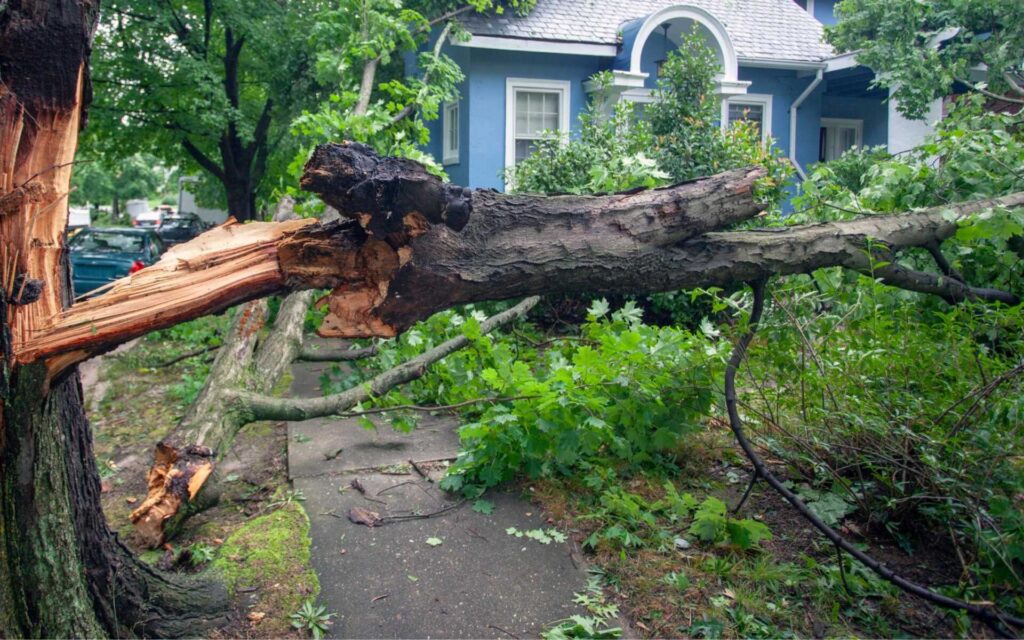
Contents
Many believe that simply waiting for water to recede after storms is enough to prevent damage. However, the reality is far more complex; effective water extraction methods are essential for minimizing risks. From using various pumps to employing dehumidifiers, each technique plays a crucial role in the process. Understanding the best approach can make all the difference in protecting your property and ensuring safety. What steps should you take first?
Key Takeaways
- Inspect the property for structural damage and hazards before starting water extraction to ensure safety.
- Utilize submersible pumps for deep water and trash pumps for debris-laden water removal efficiently.
- Employ wet/dry vacuums for detailed cleanup in smaller areas, ensuring regular maintenance for optimal performance.
- Position dehumidifiers strategically to reduce moisture levels and prevent mold growth in affected areas.
- If standing water is extensive or hazardous materials are present, consider calling professionals for specialized extraction and remediation.
Assessing the Damage and Safety Considerations
Before you begin water extraction after a storm, it’s crucial to assess the damage and ensure your safety.
Start by inspecting your property for structural damage, such as cracks in walls or ceilings, which could compromise your safety during the extraction process. Make a note of potential hazards, like downed power lines or flooded areas where electrical equipment may pose a risk.
Implement safety precautions by wearing personal protective equipment, including gloves and waterproof boots, to minimize exposure to contaminants.
Verify that your electrical system is shut off to avoid electrocution.
Once you’ve conducted a thorough damage assessment, document your findings with photos and notes; this will be imperative for insurance claims.
Remember, prioritizing your safety and understanding the extent of the damage sets the foundation for effective water extraction and restoration.
Your diligence safeguards your well-being and fosters a sense of community responsibility.
Using Pumps for Efficient Water Removal
Using pumps is one of the most effective methods for removing standing water after a storm. When you choose the right pump types—like submersible or trash pumps—you can greatly expedite the water extraction process.
Submersible pumps work well in deep water, while trash pumps handle debris-laden water efficiently, ensuring you’re not left with a muddy mess.
Once you’ve selected your pump, don’t overlook pump maintenance. Regular checks on hoses, filters, and motor functions can prevent breakdowns during critical moments.
Always verify your pump’s power source is safe and accessible, especially in wet conditions.
Utilizing Wet/Dry Vacuums
While larger pumps handle substantial water volumes, wet/dry vacuums offer a versatile solution for smaller areas and detailed cleanup after storms.
These vacuums combine the ability to handle both liquids and solids, making them ideal for picking up debris and standing water from floors, carpets, and garages. When choosing a wet/dry vacuum, consider features like tank capacity, suction power, and hose length to ensure it meets your needs.
To maintain your vacuum’s performance, follow these vacuum maintenance tips: regularly check and clean the filters to prevent clogs, empty the tank after each use, and inspect hoses for wear.
Proper maintenance prolongs the life of your vacuum and enhances its efficiency during critical cleanup efforts. By integrating a wet/dry vacuum into your water extraction strategy, you can tackle storm aftermath with confidence and ease, ensuring your space is safe and dry.
Employing Dehumidifiers for Moisture Control
To effectively control moisture after a storm, you need to understand the types of dehumidifiers available and their specific applications.
Proper placement is essential for maximizing their efficiency, so consider where you position the units in your space.
Additionally, regular maintenance and care will ensure they operate at their best, helping you prevent further water damage.
Types of Dehumidifiers
Dehumidifiers play an essential role in moisture control, especially after storms when excess humidity can lead to mold growth and structural damage.
Two primary types of dehumidifiers are refrigerant dehumidifiers and desiccant dehumidifiers. Refrigerant dehumidifiers work by cooling air to condense moisture, making them effective in warmer environments. They’re energy-efficient and ideal for larger spaces.
On the other hand, desiccant dehumidifiers use moisture-absorbing materials to extract humidity from the air, making them suitable for colder conditions.
Choosing the right type for your specific situation is vital for effective moisture control. By understanding these options, you can protect your home and foster a safe, comfortable environment for you and your loved ones.
Proper Placement Techniques
Proper placement of dehumidifiers considerably enhances their effectiveness in moisture control after a storm.
To maximize their efficiency, you should apply specific placement strategies. Position the equipment in the center of affected areas, allowing for ideal airflow and moisture absorption. Avoid corners or enclosed spaces where air circulation is limited.
Verify there’s at least a foot of clearance around the unit for proper ventilation. Also, consider the humidity levels in various rooms; place dehumidifiers in the most damp areas first.
If you’re dealing with multiple units, strategically space them to cover larger areas effectively. By focusing on proper equipment positioning, you’ll create a more comfortable environment and expedite the drying process, fostering a sense of community and shared resilience.
Maintenance and Care Tips
Effective maintenance and care of your dehumidifiers are essential for ideal moisture control after storms.
Regularly check and clean the filters to ensure maximum airflow and efficiency. This simple step prolongs the life of your unit and enhances its performance in water conservation efforts.
Make certain to empty the water reservoir frequently, especially in high-humidity conditions, to prevent overflow and damage.
During storm preparedness, keep your dehumidifiers accessible and test them periodically. If you notice any unusual noises or decreased performance, address these issues promptly.
Implementing Natural Water Drainage Techniques
When managing excess water after storms, implementing natural drainage techniques is essential.
You can enhance your landscape’s ability to direct water away from structures by grading and sloping areas appropriately.
Additionally, using native plants and installing permeable surfaces can further improve water absorption and reduce runoff.
Grading and Sloping Landscapes
Although many homeowners focus on immediate water removal after storms, the long-term solution lies in grading and sloping landscapes to facilitate natural drainage.
By implementing effective landscape grading, you can create drainage slopes that direct water away from your home and prevent pooling. Start by evaluating your property’s topography and identifying areas where water tends to accumulate.
Adjust the soil levels to ensure a gradual slope away from structures. This will reduce water damage risk and enhance your landscape’s overall health.
Native Plant Utilization
Utilizing native plants in your landscape enhances its aesthetic appeal and plays an essential role in natural water drainage techniques. By selecting plants native to your region, you can improve water absorption and reduce runoff, supporting ecosystem restoration. Native plants have deep root systems that stabilize soil and promote healthy water flow.
| Native Plant | Benefits |
|---|---|
| Bluebell | Attracts pollinators |
| Black-eyed Susan | Drought-resistant |
| Wild Bergamot | Enhances biodiversity |
| Coneflower | Supports wildlife habitat |
| Goldenrod | Improves soil health |
Incorporating these species fosters a thriving environment, contributing to the community’s ecological balance while effectively managing stormwater.
Permeable Surface Installation
Incorporating native plants beautifies your landscape and sets the stage for effective stormwater management techniques, such as permeable surface installation.
By utilizing permeable paving materials, you allow rainwater to seep through the surfaces, reducing runoff and promoting natural drainage. This method helps maintain the local water cycle, minimizing flooding during storms.
You can choose various materials, including porous asphalt, permeable concrete, or interlocking pavers, all designed to filter pollutants while allowing water to penetrate.
Additionally, integrating these surfaces creates a cohesive environment where community members can gather and appreciate nature.
Professional Water Extraction Services and When to Call Them
When water damage strikes your home after a storm, knowing when to call professional water extraction services can make all the difference in preventing further issues.
It’s crucial to recognize the signs that indicate you need expert help. Here are four key situations to evaluate:
- Extensive Water Accumulation: If standing water covers large areas of your property, specialized extraction equipment is necessary.
- Persistent Moisture: Ongoing dampness in walls or floors can lead to mold growth and structural damage.
- Contaminated Water: If floodwaters contain debris, chemicals, or sewage, professionals have the expertise to handle hazardous materials safely.
- Time Constraints: When you’re pressed for time, experts can act quickly to minimize damage and restore your home efficiently.
Recap
In the aftermath of a storm, swift and effective water extraction is key to protecting your property. By evaluating damage, using pumps, and employing wet/dry vacuums and dehumidifiers, you can tackle water issues head-on. But when should you consider calling in the pros? If the damage seems overwhelming or hazardous, professional services can provide the expertise needed for thorough recovery. Stay proactive, and you’ll minimize long-term effects while ensuring your home remains a safe haven.
Recent Posts
Pricing Insights for Damage Restoration Services
When unexpected events disrupt your life, steering through the costs of damage restoration can feel
Budgeting for Blaze Cleanup: A Trusty Guide
Budgeting for blaze cleanup is like steering through a maze—complex and overwhelming but attainable with
Top Storm Damage Repair Techniques for Homeowners
When storms release their fury, the aftermath of storm damage can feel overwhelming, much like
